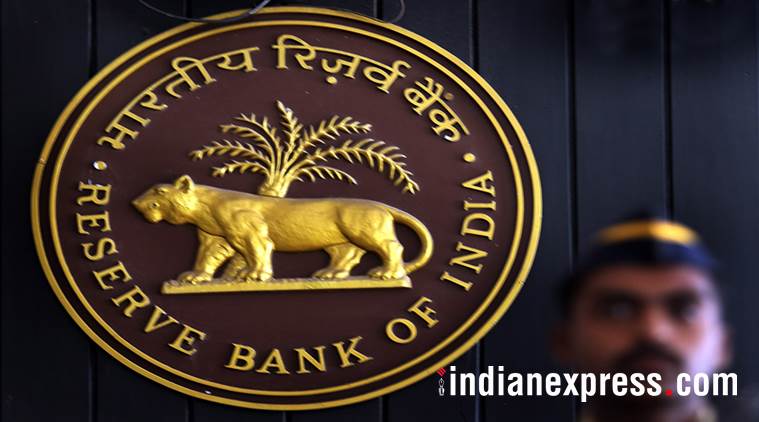Amid slipping growth and low inflation, markets factor in another policy rate cut
Foreign portfolio investors (FPIs), worried over the ‘super rich tax’, pulled out Rs 12,419 crore in July and another Rs 2,633 crore in August so far.
 Rbi monetary policy committee to meet from August 5-7.
Rbi monetary policy committee to meet from August 5-7.
A deepening economic slowdown has fuelled expectations of another rate cut by the Reserve Bank of India, at its upcoming Monetary Policy Committee (MPC) meeting.
After Finance Minister Nirmala Sitharaman publicly commented on the need for ‘significant rate cuts’, analysts are expecting the central bank’s MPC to cut the key lending rate — Repo rate — by another 25 basis points, while cautioning the markets against putting the onus on a recovery predominantly on monetary policy.
Arguing for a rate cut, analysts point to consistently low inflation and an economy which is slowing and growing below the reported numbers and well below the MPC’s own estimate of 7 per cent for FY20 for a liberal policy regime.
The MPC is scheduled to meet between August 5 and 7.
Though the MPC has the leeway to cut rates further given its mandate of 4 per cent headline consumer price index (CPI) inflation, having already cut the Repo rate by 75 bps from 6.5 per cent to 5.75 per cent over the last three meetings, it is to be seen how much the central bank can help as transmission of rate cut benefits by banks has been rather slow.
Growth and inflation will remain worries for the RBI. On Friday, HDFC chairman Deepak Parekh said there has been a distinct slowdown in the economy and the problem was compounded by the tight liquidity situation in the non-banking financial companies (NBFCs) and housing finance companies (HFCs) and the reluctance of banks to lend funds.
Meanwhile, L&T chairman AM Naik had said that “we should feel ‘lucky’ even if GDP clips at 6.5 per cent”.
Stock market benchmark Sensex, which has already seen the slowdown blues, plummeted by a whopping 2,800 points from 39,908.06 on July 4 to 37,118.22 on August 2 — a decline of 7.8 per cent after the presentation of the Union Budget on July 5.
Foreign portfolio investors (FPIs), worried over the ‘super rich tax’, pulled out Rs 12,419 crore in July and another Rs 2,633 crore in August so far.
The Monetary policy review comes at a time when there is renewed focus on the economic growth. Since the last policy meeting, data sets seem to indicate that while inflation is trending on the lower side, growth continues to be subdued on account of the visible consumption slowdown and sluggish investment outlook.
Shanti Ekambaram, president–consumer banking, Kotak Mahindra Bank, said, “Since the last policy, data and trends emerging indicate that inflation continues to be stable and is trending on the lower side. Further, growth has been muted on account of visible consumption slowdown as well as subdued investment outlook.”
“Despite a late start, we have seen that the monsoon has reasonably caught up, which should give a boost to agriculture and lead to the revival to some extent of consumption in rural India,” she added.
Globally, negative yields have been seen in certain countries and overall interest rates either are stable or dropping, and growth has slowed.
“Against this backdrop, the central bank is likely to cut the Repo rate by 25 bps. It will be important to study the policy narrative to get a direction of likely future action by the RBI, liquidity measures, any other structural changes etc.
“Suffice it to say that inflation will be the central theme balanced with the need to boost growth,” Ekambaram said.
According to Suvodeep Rakshit, senior economist, Kotak Institutional Equities, the RBI MPC will meet for the August policy in the backdrop of weak economic growth increasingly becoming a bigger concern, even as the inflation trajectory remains broadly in line with its expectations.
“Since the last policy meeting high frequency indicators have signalled a sharper decline in activity which will weigh on the policy meet discussions,” he further said.
While the RBI’s inflation estimates of 3-3.1 per cent in the first half of FY20 and 3.4-3.7 per cent in the second half of FY20 are unlikely to be breached by a significant margin, the near term outlook on growth (6.4-6.7 per cent in H1FY20) will likely see substantial downside risks.
Further, core inflation has steadily softened and will likely remain subdued given the weak aggregate demand scenario, indicating a widening of the output gap, said an analyst.
On the global front, growth remains under pressure, global central banks are indicating easier monetary policy, US-China trade war continues to simmer, Brexit-related uncertainty remains high, and crude prices outlook remains benign.
Significant growth concerns, comfort from the inflation trajectory, and weak outlook on global macro scenario should provide room for the RBI to reduce Repo rate by another 25 bps to 5.5 per cent in the August policy, Rakshit said.
“It (RBI) is widely expected to cut the Repo Rate by 25 bps and which is already discounted by the bond, equity and currency markets. The markets thus will be looking for further guidance on how much more can the MPC cut the Repo rate going forward,” said Arvind Chari, head-fixed income, Quantum Advisors.
The Repo rate being cut below 6 per cent and the RBI turning accommodative has happened only twice before in the last 20 years.
It is not a common occurrence and only a continued economic slowdown (like the one in 2002-03) or a financial crisis (2008-09) made the RBI to cut well below the six per cent mark, Chari said.
Abhishek Bansal, chairman, ABans Group of Companies, said, “We expect the RBI to cut interest rate by 25 basis points which will be the fourth time in a row. FIIs’ (foreign institutional investors) outflow continued to grow in July to Rs 15,373 crore following a trend from consecutively last two months, while domestic institutional investors remained supportive.”
In India, monetary and fiscal excesses have not ended well. In a country which has had average 5 per cent inflation, even if Repo rates do get cut to 5 per cent, it seems unlikely it will sustain there for long.



- 01
- 02
- 03
- 04
- 05




























